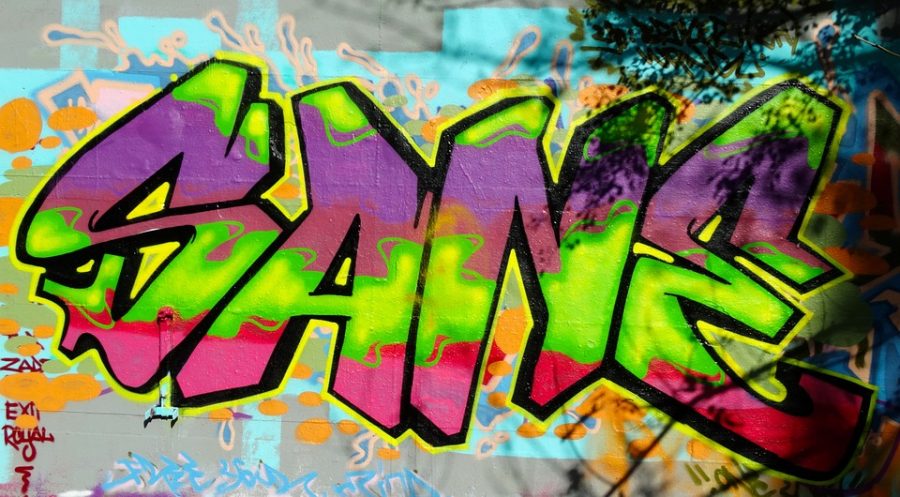Graffiti: art or crime?
May 4, 2018
Despite being illegal, graffiti is a part of any metropolitan area, from elaborate works of street art to “tags” commonly spray-painted by gang members..
According to the Philly Voice, graffiti in the modern sense first became a common sight in Philadelphia in the 1960s. Gangs used graffiti as a way to mark their territory. It was also used by artists as a way to make political statements.
Since then, some graffiti has become recognized as an art form. Google has categorized “street art” works on its Arts and Culture website, and some cities have commissioned street artists to paint murals in public areas. The walls of buildings in Belmar, NJ are often decorated with colorful murals and eye-catching art for beachgoers during the summer season.
Some street artists, such as British graffiti artist Banksy, have risen to worldwide fame. According to the New Yorker, Banksy’s work first appeared around Bristol in 1993. Since then, his works have appeared in San Francisco, Paris, Barcelona, and New York City.
Banksy’s art usually involves some kind of social commentary. His most famous pieces include a man in riot gear about to throw a bouquet of flowers instead of a weapon, and a pair of soldiers in the Vietnam war painting a peace sign on a wall.
Junior Merina Spaltro of Allentown thinks the work of street artists like Banksy have value as activism.
“If it’s something that sends a message about civil rights or something like that I think it’s both art and a statement,” Spaltro said.
New pieces are greatly anticipated by the public, although some argue that street art done without permission is an act of vandalism and should not be encouraged. Removing graffiti can be expensive, and businesses can lose customers from the negative image that graffiti creates. According to the Chicago Tribune, the city of Chicago spent nearly $5 million on graffiti removal in 2014.
The presence of graffiti can also make people feel unsafe in their communities. “Tagging” refers to the practice of graffiti artists signing their names. This is often cited as a way for gang members to communicate with each other or claim a territory.
The presence of graffiti can also lead to a wave effect, where property values in an area will go down and crime rates will increase. According to the journal Science, the University of Groningen, Netherlands, set up a field experiment in which a 5 euro note was placed in a mailbox in an area surrounded with graffiti on nearby walls. They found that 25% of the people observed stole the note, compared to 13% in an area with clean walls.
Despite the downsides, many people view graffiti as a means of artistic expression. Several CHS students think that graffiti has the potential to be a valid form of art. Junior Kera McGovern of Tinton Falls thinks that the value of graffiti depends on the context.
“If the artist was contacted by the building supervisor or someone who owns the building then it can be classified as art, but if it’s without permission then it’s vandalism,” McGovern said.
Junior Vivian DeRosa of Ocean also favors street art over tags and other types of graffiti.
“If it’s not an important building and the graffiti artist has the permission of the building owner then I definitely think it’s art. If it’s just spray painting random words on government buildings then I’m not quite sure that qualifies,” DeRosa said.




